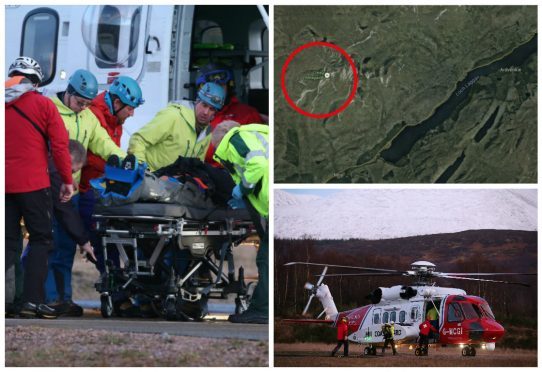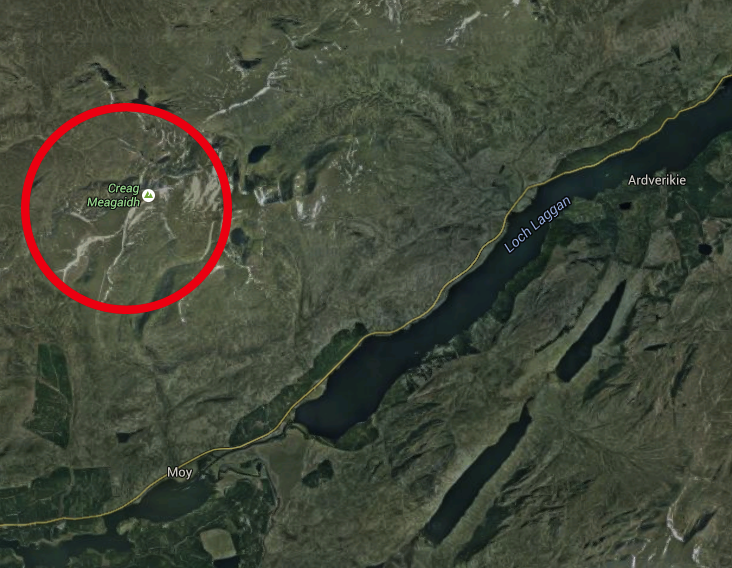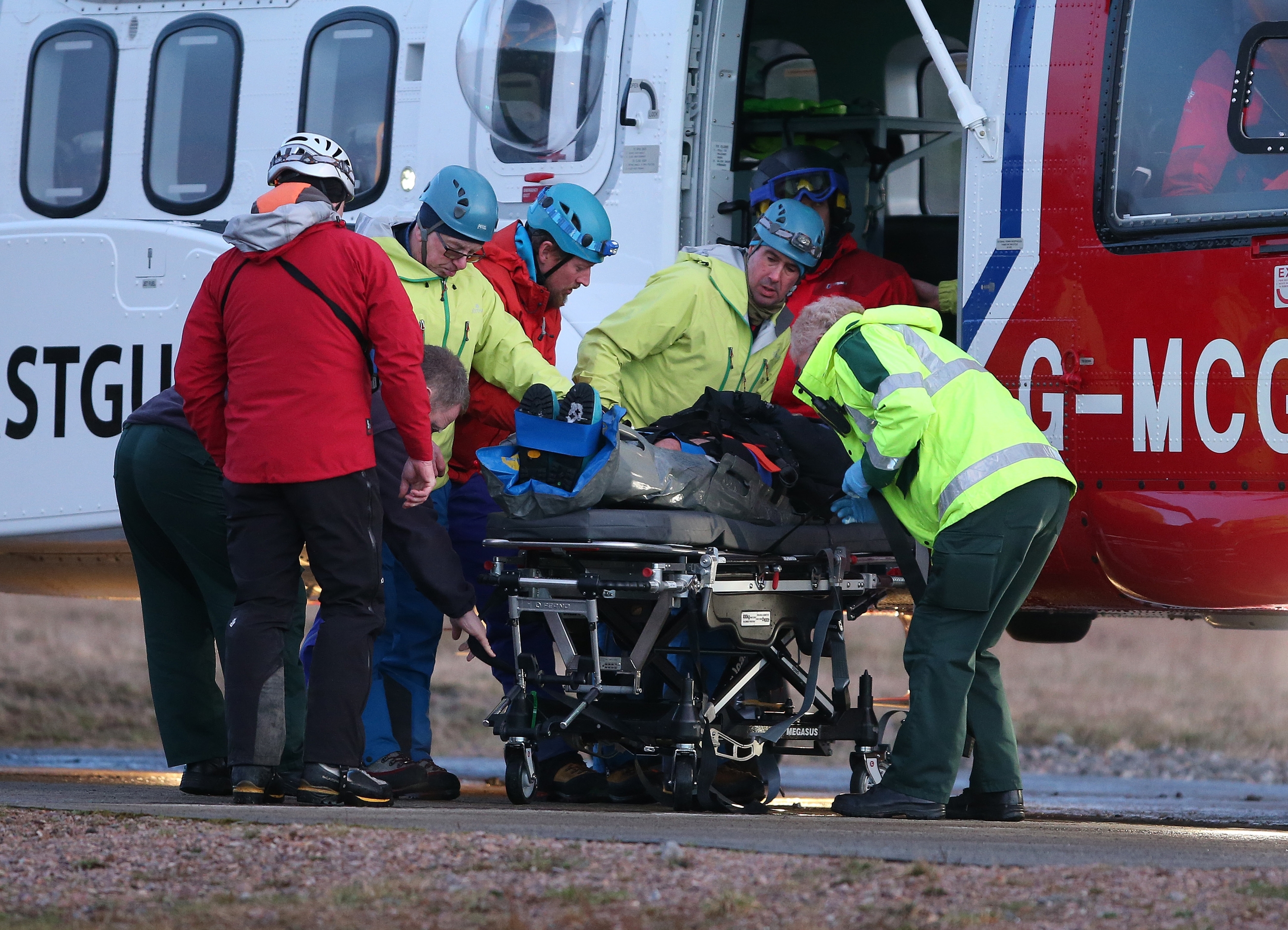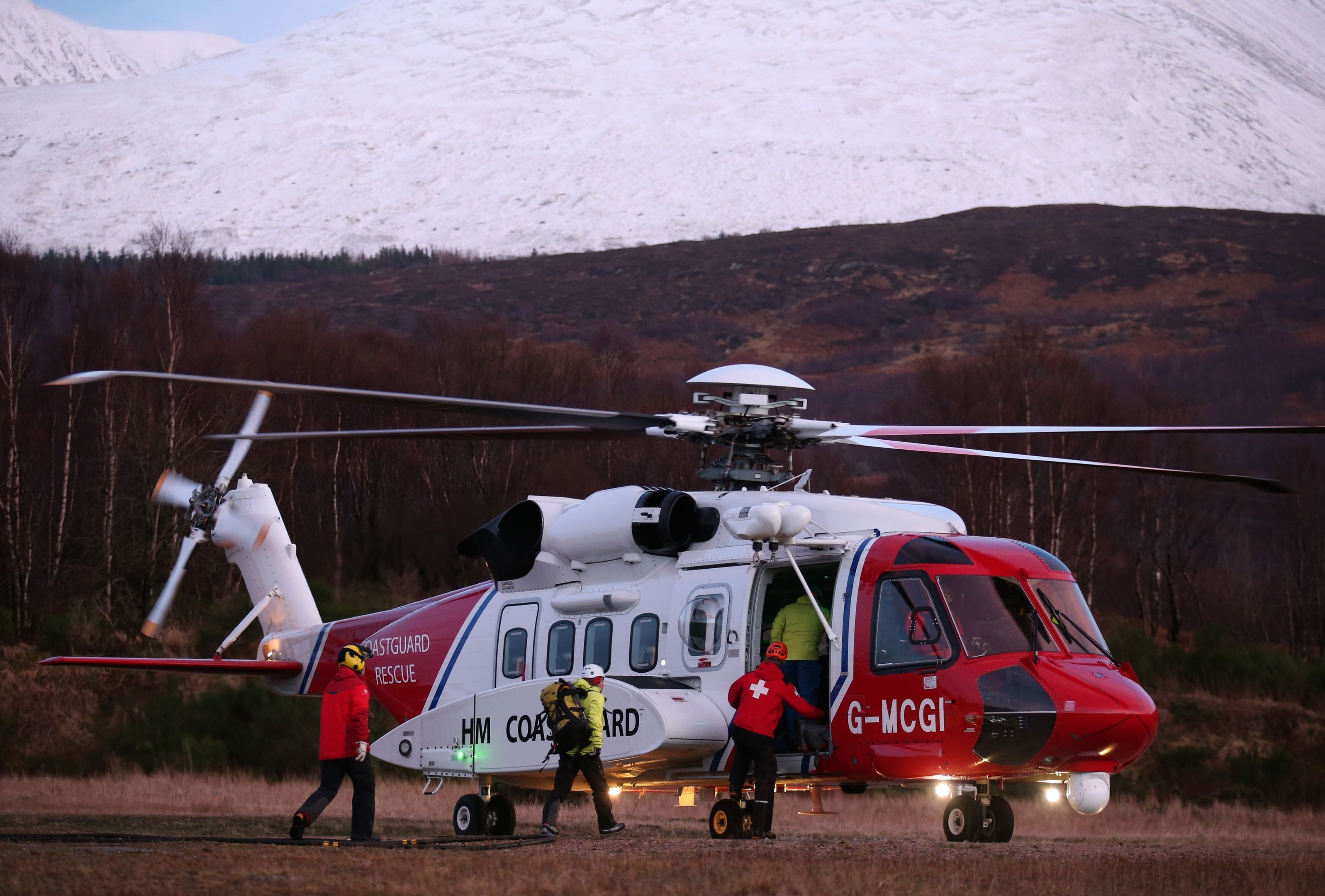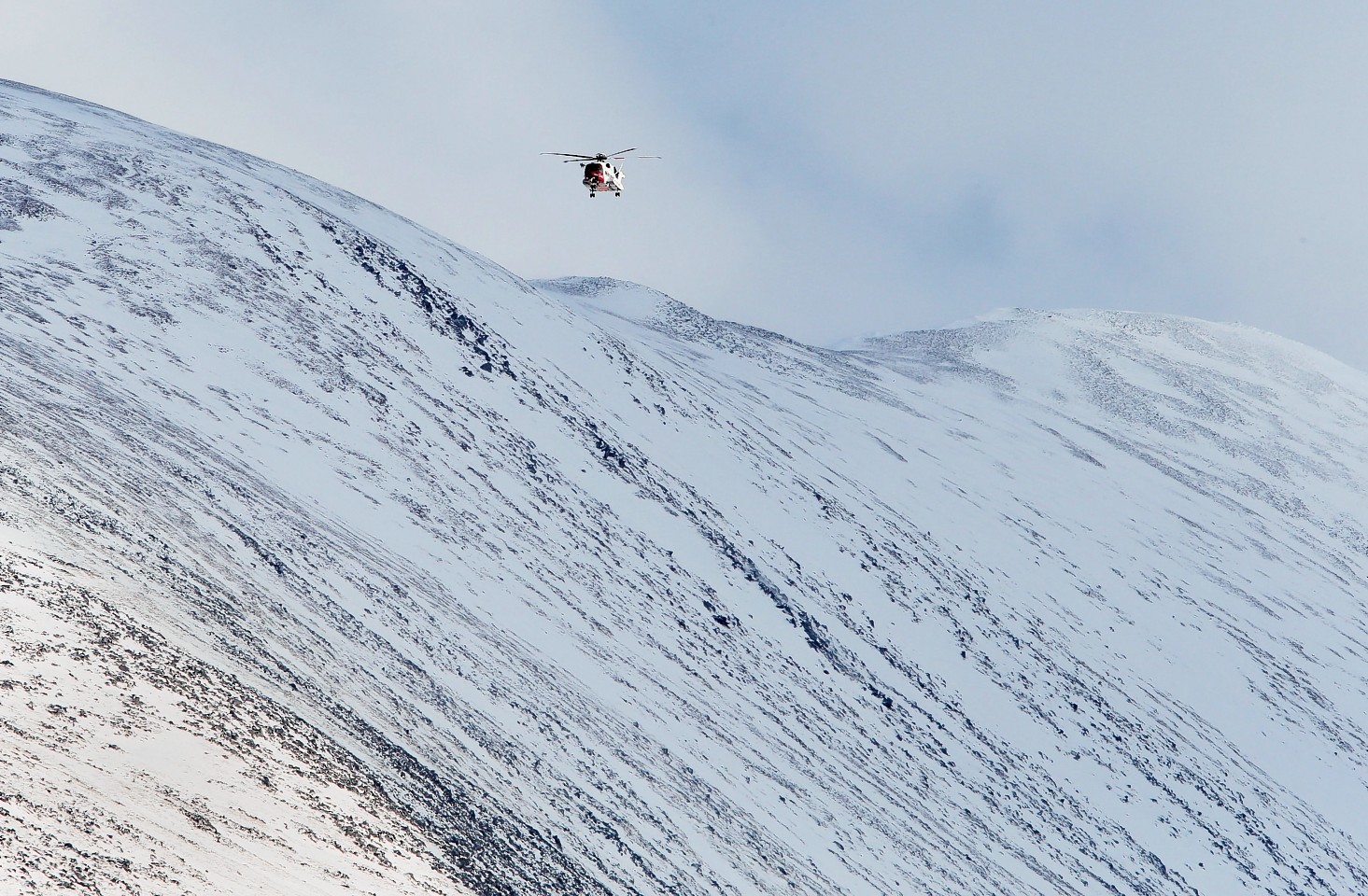Two people have reportedly been airlifted to hospital following a large avalanche in north Lochaber
Lochaber Mountain Rescue Team are at the scene and are now standing down after carrying out a search.
One of the injured climbers is in a serious condition.
The search of Ben Nevis was diverted at 3.13pm to investigate reports of possible cries of help heard by other climbers coming from a climbing crag in a gully on 3710-feet high Creag Meagaidh.
Police Scotland confirmed there had been “a large avalanche” on the mountain. It was too early to say if there had been any casualties.
Lochaber MRT and Cairngorm MRT were sending teams of rescuers.
John Stevenson, leader of Lochaber MRT, earlier said they were baffled why despite Ben Nevis being full of “hundreds” of climbers and walkers at the weekend, nobody had a positive identification of where missing climbers Rachel Slater and Tim Newton had been.
“The most likely explanation is that they could have got caught up and been buried in an avalanche. It is the number one theory we are working on. It is very possible,” said Mr Stevenson.
“The conditions all weekend were very good and in a poor winter when they conditions are good, the mountain just gets hammered by climbers and walkers. There were people all over it, yet nobody has definitely seen this pair. Obviously the longer we go on looking the more worried you become.”
Mr Stevenson said two of his own team had been swept a couple of hundred metres by an avalanche looking for Ms Slater and Mr Newton on Tuesday.
“The conditions are too dangerous to go back on the mountain at the moment. Avalanche is the big worry. We need the snow to settle. Unfortunately snow is being dumped in the very places we need to look.
“The forecast is not looking good ahead either. But we are hoping there may be a break in the conditions so we can have a look from a helicopter. We have made the request. Obviously our feelings are with the families – it is very difficult for them.”
Heather Morning, mountain safety adviser with the Mountaineering Council of Scotland, said the conditions in Scotland can be as “challenging as anywhere in the world.”
“The wind is a huge factor as well as the cold. The conditions in the Scottish Highlands are among the most challenging anywhere in the world,” she said.
“The sport is a risk – but it has been said it’s more of a risk driving along the A9.
“We all accept there are risks when we head out to the mountains, but it is important to assess the risks and to do your homework before you head out.
“I always stress that human triggered avalanches happen when the official risk is ‘considerable’ – not even the red ‘high.’ The eight avalanche deaths in 2013 were when the risk was ‘considerable.'”
Ms Slater, 24, and Mr Newton, 27, had been climbing on the 4409-feet high mountain over the weekend as part of a Valentine’s Day trip but were reported missing on Monday.
Attempts to locate the couple were suspended on Tuesday because of treacherous weather conditions.
Ms Slater and Mr Newton, from Bradford in West Yorkshire, were thought to have been camping near the Charles Inglis Clark memorial hut on the north side of the mountain. Their green tent has been recovered – as has Ms Slater’s car at the foot of the mountain.
Last month two climbers – including a rescue team member – died climbing in Glen Coe.
Joe Smith, 23, who lived in Kinlochleven in Lochaber, perished with experienced mountain skills instructor Simon Davidson, 34, who lived in Fort William.
The pair probably plunged “several hundred feet” on January 16.
Mr Smith, who was originally from Lancashire, was a member of the Glencoe Mountain Rescue Team that found their bodies.
It is believed the men – who were friends – may have got caught up in an avalanche.
The Sportscotland Avalanche Information Service (SAIS) said today that the avalanche hazard in its six areas – Lochaber, Glen Coe, Creag Meagaidh, Southern Cairngorms , Northern Cairngorms and Torridon – was “considerable” in all but North Cairngorms.
Already 69 avalanches have been recorded this season – including six in the last 48 hours.
The number of avalanches recorded in Scotland’s mountains fell last winter.
The SAIS recorded 237 avalanches compared to 351 the previous year.
However 2013/2014 was noted as one of the snowiest winters in Scotland’s mountains in almost 70 years.
Though fewer in number during last winter, one of the biggest avalanches in years in the Scottish Highlands was recorded in March.
The SAIS reported the debris had slid over 1000 metres in the Southern Cairngorms.
The event occurred at Glas Tulaichean and was described as a “full depth avalanche.” A member of staff at Glenshee Ski Centre alerted the SAIS to the slide on the 3,448ft mountain.
It was filled with mud, rocks and large blocks of snow.
In February last year a climber was killed by an avalanche on 3461 feet high Liathach in the Torridon Hills.
Max Norman, 41, was a landscape architect based in Ipswich, Suffolk.
His projects included helping design the Diana, Princess of Wales Memorial Fountain in London.
There were no avalanche-related deaths the previous winter.
During the winter of 2012-13, eight people died because of avalanches. It was the highest number of deaths in five seasons of SAIS forecasts.
Meanwhile a male ice climber in his 60s was airlifted by the same Coastguard helicopter to Raigmore Hospital in Inverness with a suspected broken ankle after falling ten feet on Coire an’t Sneachea in the Cairngorms. A climbing partner was with the injured man, who raised the alarm at 12.41pm.
He had also been attended to by instructors from Glenmore Lodge – Scotland’s National Outdoor Training Centre.
